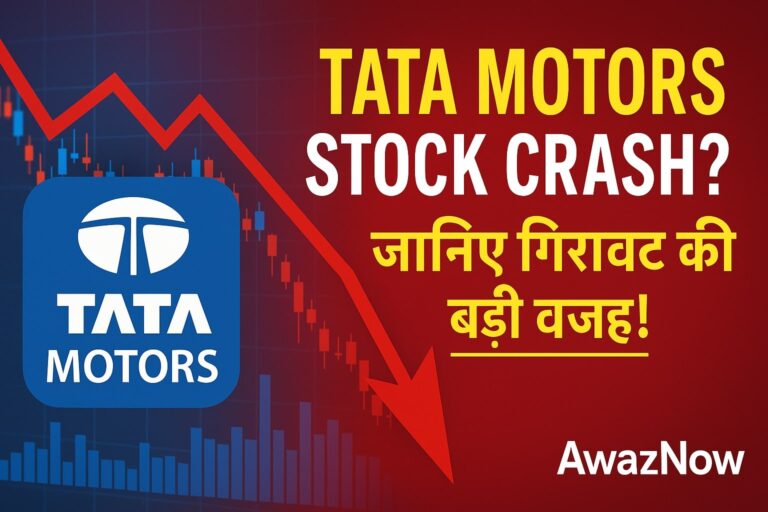When you start learning about the stock market, one term you will hear a lot is the P/E Ratio, or Price-to-Earnings Ratio. It sounds technical, but don’t worry it’s not as scary as it seems. In this blog, I will explain what the P/E Ratio is, how it works, and how you can use it to make better investment decisions. By the end, you will have a clear understanding of how this powerful tool can help you spot good stocks and avoid bad ones.
What is the P/E Ratio?
The P/E Ratio (Price-to-Earnings Ratio) is a simple formula:
P/E Ratio = Share Price ÷ Earnings Per Share (EPS)
Let’s break that down:
- Share Price is how much one share of a company costs in the stock market.
- Earnings Per Share (EPS) is how much profit the company makes for each share.
So, the P/E Ratio tells you how much investors are willing to pay today for ₹1 of the company’s earnings.
Example:
- Imagine a company’s share price is ₹100 and its EPS is ₹10.
- P/E Ratio = ₹100 ÷ ₹10 = 10
This means investors are paying ₹10 for every ₹1 of the company’s profit.
Why is the P/E Ratio Important?
The P/E Ratio helps you understand if a stock is expensive or cheap compared to its earnings.
- A high P/E Ratio means the stock is priced high compared to its profits. This can happen when investors believe the company will grow in the future.
- A low P/E Ratio means the stock is priced low. It may be undervalued, or the company might be facing some trouble.
Important: A high or low P/E does not automatically mean good or bad. It is just one tool among many. Always look at the full picture.
Types of P/E Ratios
There are mainly two types:
- Trailing P/E Ratio
This uses past earnings (usually the last 12 months). It shows how the company performed in the past.
- Forward P/E Ratio
This uses estimated future earnings. Analysts predict how much profit the company will make in the next 12 months.
Note: Use both for a balanced view. Trailing shows history, forward shows potential.
How to Use P/E Ratio in Investing
Let’s say you are comparing two companies in the same industry:
- Company A has a P/E of 15
- Company B has a P/E of 25
At first glance, Company A seems cheaper. But maybe Company B is growing faster. So here’s what to do:
Compare P/E with Industry Average
If the industry average P/E is 20, Company A might be undervalued, or maybe it’s not growing much. Company B might be a growth stock.
Look at the Company’s History
What was the company’s average P/E over the last 5 years? If today’s P/E is much higher, the stock might be overpriced.
Don’t Judge Alone
Combine the P/E Ratio with other tools like:
- PEG Ratio (P/E divided by growth rate)
- Debt levels
- Profit margins
- Return on Equity (ROE)
What is a Good P/E Ratio?
There is no one-size fits all answer. It depends on the industry and growth potential.
But generally:
- P/E under 10 = Possibly undervalued or risky
- P/E between 10 and 20 = Fairly priced for stable companies
- P/E over 25 = Expensive or high growth expectations
Example: Tech companies often have high P/E because they are growing fast. But a high P/E in a slow industry (like utilities) might be a red flag.
Pros and Cons of Using P/E Ratio
Pros:
Easy to calculate
Good for comparing similar companies
Helps spot overvalued or undervalued stocks
Cons:
Doesn’t show company’s debt
Doesn’t work well if earnings are low or negative
Can be misleading during economic ups and downs
Real-Life Example
Let’s take two fictional companies:
- Alpha Motors: Share Price = ₹500, EPS = ₹50 – P/E = 10
- Beta Electric: Share Price = ₹1000, EPS = ₹25 – P/E = 40
Alpha Motors seems cheaper. But maybe Beta Electric is launching electric vehicles and is expected to grow fast.
If you only look at P/E, you might miss the bigger picture. That’s why it’s smart to research company news, financials, and future plans.
Tips for Beginners
- Don’t chase low P/E stocks blindly. Sometimes they’re cheap for a reason.
- Compare apples to apples. Always compare companies in the same industry.
- Use it with other ratios. No single ratio tells the whole story.
Conclusion
The P/E Ratio is like a price tag on a stock. It tells you how much investors are willing to pay for a company’s earnings. While it’s not perfect, it’s a handy tool to keep in your investing toolbox.
If you are new to the stock market, start using the P/E Ratio to compare companies. Over time, you will get better at spotting opportunities and avoiding overhyped stocks.
Remember: Investing is part numbers, part common sense, and a lot of patience. Keep learning, stay curious, and make smart choices.
Reference:-





